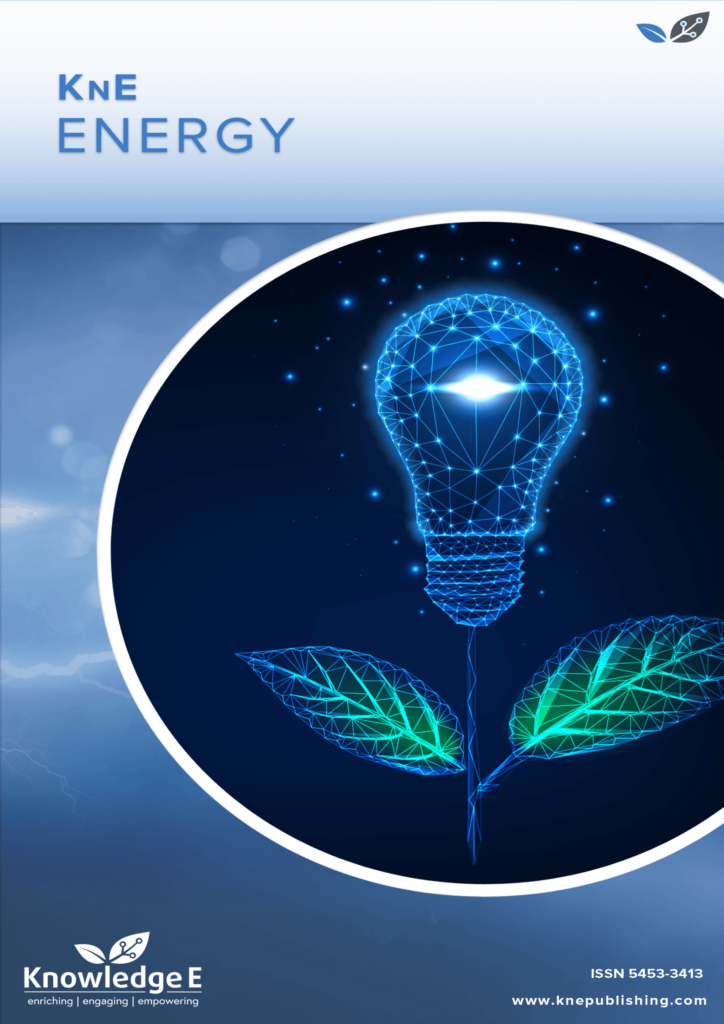
KnE Energy
ISSN: 2413-5453
The latest conference proceedings on energy science, applications and resources
Laser Irradiation as a Tool to Control the Resonance Energy Transfer in Bacteriorhodopsin–Quantum Dot Bio-Nano Hybrid Material
Published date:Apr 17 2018
Journal Title: KnE Energy
Issue title: The 2nd International Symposium "Physics, Engineering and Technologies for Biomedicine"
Pages:168–174
Authors:
Abstract:
Bacteriorhodopsin (BR) is a natural photosensitive protein which can be considered promising in photovoltaics and optoelectronics because of its ability to produce a pronounced electrochemical response and controllably change its absorption spectrum under light excitation. However, its applicability is limited by its narrow absorption spectrum and low values of the absorption cross sections. Semiconductor quantum dots (QDs), which have high one- and two-photon absorption cross-sections in a UVand NIR spectral regions, respectively, can significantly improve the light sensitivity of BR by means of Förster resonance energy transfer (FRET) from QD to BR. In this work, we demonstrate the possibility to control the efficiency of FRET from QD to BR within electrostatically bound complexes of QD and purple membranes (PM) containing BR. We show that laser irradiation of QDs at different wavelengths leads to distinct changes (rise or decrease) of QD luminescence quantum yield (QY) without changing of QD structure. Such photo-induced changes in the QY of QD lead to a corresponding change in the efficiency of FRET. We have estimated efficiencies of FRET from QD to BR in the PM complexes composed of irradiated and non-irradiated QDs and found the increase in FRET efficiency with irradiated QDs.
References:
[1] D. Oesterhelt, C. Bräuchle, and N. Hampp, “Bacteriorhodopsin: a biological material for information processing,” Quarterly Reviews of Biophysics, vol. 24, no. 4, p. 425, 1991.
[2] P. Linkov, V. Krivenkov, I. Nabiev, and P. Samokhvalov, “High quantum yield CdSe/ZnS/CdS/ZnS multishell quantum dots for biosensing and optoelectronic applications,” Materials Today Proceedings, vol. 3, no. 2, pp. 104–108, 2016.
[3] A. Rakovich, A. Sukhanova, N. Bouchonville, E. Lukashev, V. Oleinikov, M. Artemyev, V. Lesnyak, N. Gaponik, M. Molinari, M. Troyon, Y. P. Rakovich, J. F. Donegan, and I. Nabiev, “Resonance energy transfer improves the biological function of bacteriorhodopsin within a hybrid material built from purple membranes and semiconductor quantum dots.,” Nano Letters, vol. 10, no. 7, pp. 2640–8, 2010.
[4] N. Bouchonville, M. Molinari, A. Sukhanova, M. Artemyev, V. A. Oleinikov, M. Troyon, and I. Nabiev, “Charge-controlled assembling of bacteriorhodopsin and semiconductor quantum dots for fluorescence resonance energy transfer-based nanophotonic applications,” Applied Physics Letters, vol. 98, no. 1, p. 13703, 2011.
[5] N. Bouchonville, A. Le Cigne, A. Sukhanova, M. Molinari, and I. Nabiev, “Nanobiophotonic hybrid materials with controlled FRET efficiency engineered from quantum dots and bacteriorhodopsin,” Laser Physics Letters, vol. 10, no. 8, p. 85901, 2013.
[6] N. Bouchonville, A. Le Cigne, A. Sukhanova, M. Saab, M. Troyon, M. Molinari, and I. Nabiev, “Controlled FRET efficiency in nano-bio hybrid materials made from semiconductor quantum dots and bacteriorhodopsin,” SPIE Proceedings, vol. 8460, p. 84600X, 2012.
[7] V. A. Krivenkov, D. O. Solovyeva, P. S. Samokhvalov, K. I. Brazhnik, G. E. Kotkovskii, A. A. Chistyakov, E. P. Lukashev, and I. Nabiev, “Photoinduced modification of quantum dot optical properties affects bacteriorhodopsin photocycle in a (quantum dot)- bacteriorhodopsin hybrid material,” Journal of Physics Conference Series, vol. 541, p. 12045, 2014.
[8] V. Krivenkov, P. Samokhvalov, D. Solovyeva, R. Bilan, A. Chistyakov, and I. Nabiev, “Two-photon-induced Förster resonance energy transfer in a hybrid material engineered from quantum dots and bacteriorhodopsin.,” Optics Letters, vol. 40, no. 7, pp. 1440–3, 2015.
[9] V. A. Krivenkov, D. O. Solovyeva, P. S. Samokhvalov, R. S. Grinevich, K. I. Brazhnik, G. E. Kotkovskii, E. P. Lukashev, and A. A. Chistyakov, “Resonance energy transfer in nano-bio hybrid structures can be modulated by UV laser irradiation,” Laser Physics Letters, vol. 11, no. 11, p. 115601, 2014.
[10] A.Rakovich, I. Nabiev, A. Sukhanova, V. Lesnyak, N. Gaponik, Y. P. Rakovich, and J. F. Donegan, “Large enhancement of nonlinear optical response in a hybrid nanobiomaterial consisting of bacteriorhodopsin and cadmium telluride quantum dots,” ACS Nano, vol. 7, no. 3, pp. 2154–2160, 2013.
[11] V. Oleinikov, N. Bouchonville, A. Sukhanova, M. Molinari, S. Sizova, K. Mochalov, A. Chistyakov, E. Lukashev, A. Rakovich, J. F. Donegan, and I. Nabiev, “Extension of the spectral range of bacteriorhodopsin functional activity by energy transfer from quantum dots,” SPIE Proceedings, vol. 8464, p. 84640Z, 2012.
[12] V. Krivenkov, A. Tretyachenko, P. S. Samokhvalov, A. A. Chistyakov, and I. Nabiev, “Controllable photo-brightening/photo-darkening of semiconductor quantum dots under laser irradiation,” SPIE Proceedings, vol. 9884, p. 98843L, 2016.
[13] Lakowicz J.R. Principles of Fluorescence Spectroscopy. New York: Springer. 2006. P. 443-527.
[14] V. A. Krivenkov, P. S. Samokhvalov, R. S. Bilan, A. A. Chistyakov, and I. R. Nabiev, “Resonant transfer of one- and two-photon excitations in quantum dot – bacteriorhodopsin complexes,” Optics and Spectroscopy, vol. 122, no. 1, pp. 42–47, 2017.
[15] V. A. Krivenkov, P. S. Samokhvalov, P. A. Linkov, S. D. Prokhorov, I. L. Martynov, A. A. Chistyakov, and I. Nabiev, “Effects of surface ligands and solvents on quantum dot photostability under pulsed UV laser irradiation,” SPIE Proceedings, vol. 9505, p. 95050U, 2015.
[16] V. A. Krivenkov, P. S. Samokhvalov, P. A. Linkov, D. O. Solovyeva, G. E. Kotkovskii, A. A. Chistyakov, and I. Nabiev, “Surface ligands affect photoinduced modulation of the quantum dots optical performance,” SPIE Proceedings, vol. 9126, p. 91263N, 2014.